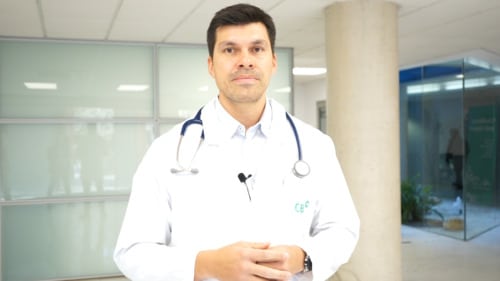After holidays, an injury, or simply a period of inactivity, many people decide to return to sports and physical activity with renewed energy. However, this process often brings along numerous myths that, instead of helping, can put health at risk and increase the likelihood of sports injuries.
At CreuBlanca, we want to guide you through this return to exercise by providing tips to do it safely, effectively, and with injury prevention in mind, while debunking some of the most common myths.
(h2) Myths about returning to training after a break
(h3) Myth 1: “You need to make up for lost time by training more hours”
One of the most common mistakes when returning to training is believing that the more hours you spend, the faster you’ll regain your fitness. In reality, increasing the workload too quickly only raises the risk of muscle and joint injuries. The key is progression: start slowly and increase intensity gradually.
(h3) Myth 2: “If I don’t feel sore, the training didn’t work”
Muscle soreness is not an indicator of effectiveness. It simply shows that the muscle was not accustomed to a certain effort, but it does not measure the quality of the training. You can improve endurance and strength without experiencing pain the following day.
(h3) Myth 3: “Cardio is the most important thing to get back in shape”
Cardio does improve cardiovascular endurance, but it’s not enough. Strength training is essential to protect joints, prevent injuries, and enhance physical performance. A balanced combination of strength and cardio is the most effective formula.
(h3) Myth 4: “The more you sweat, the more fat you burn”
Sweating does not mean fat loss; it means losing water and minerals that the body eliminates to regulate temperature. Once you rehydrate, most of the lost weight will return. What truly supports fat loss is consistent training and a balanced diet, not how much you sweat in a session.
(h3) Myth 5: “There’s no need to check your physical condition before returning”
Going back to sports without a medical evaluation can be a mistake, especially after a long break or if you’ve had previous discomfort. A sports medical check-up and, in some cases, a gait analysis help tailor training and improve injury prevention.
(h3) Myth 6: “Protein is only for those who want to build muscle”
Protein is essential for muscle recovery in anyone who trains, not just bodybuilders. A balanced diet with adequate protein intake supports tissue regeneration and adaptation to exercise.
(h3) Myth 7: “Training every day is the best way to get back in shape”
Rest is an essential part of training. Without proper recovery periods, the body doesn’t assimilate the benefits of exercise and the risk of fatigue and overload injuries increases. Alternating training and rest days is key to progressing safely.
(h3) Myth 8: “If I stop for a few months, I lose everything I’ve gained”
After a period of inactivity, it’s normal to lose some endurance or strength, but you don’t go back to square one. Thanks to “muscle memory,” the body recalls previous adaptations, allowing for a faster physical recovery than the first time.
After a break, the goal is not just to start training again, but to do so in a healthy and sustainable way. Listening to your body, respecting rest times, and having proper guidance are key to avoiding injuries and enjoying exercise.
At CreuBlanca, our Traumatology and Sports Medicine units are available to help you return to physical activity safely, offering diagnosis, prevention, and personalized treatment tailored to your needs.

